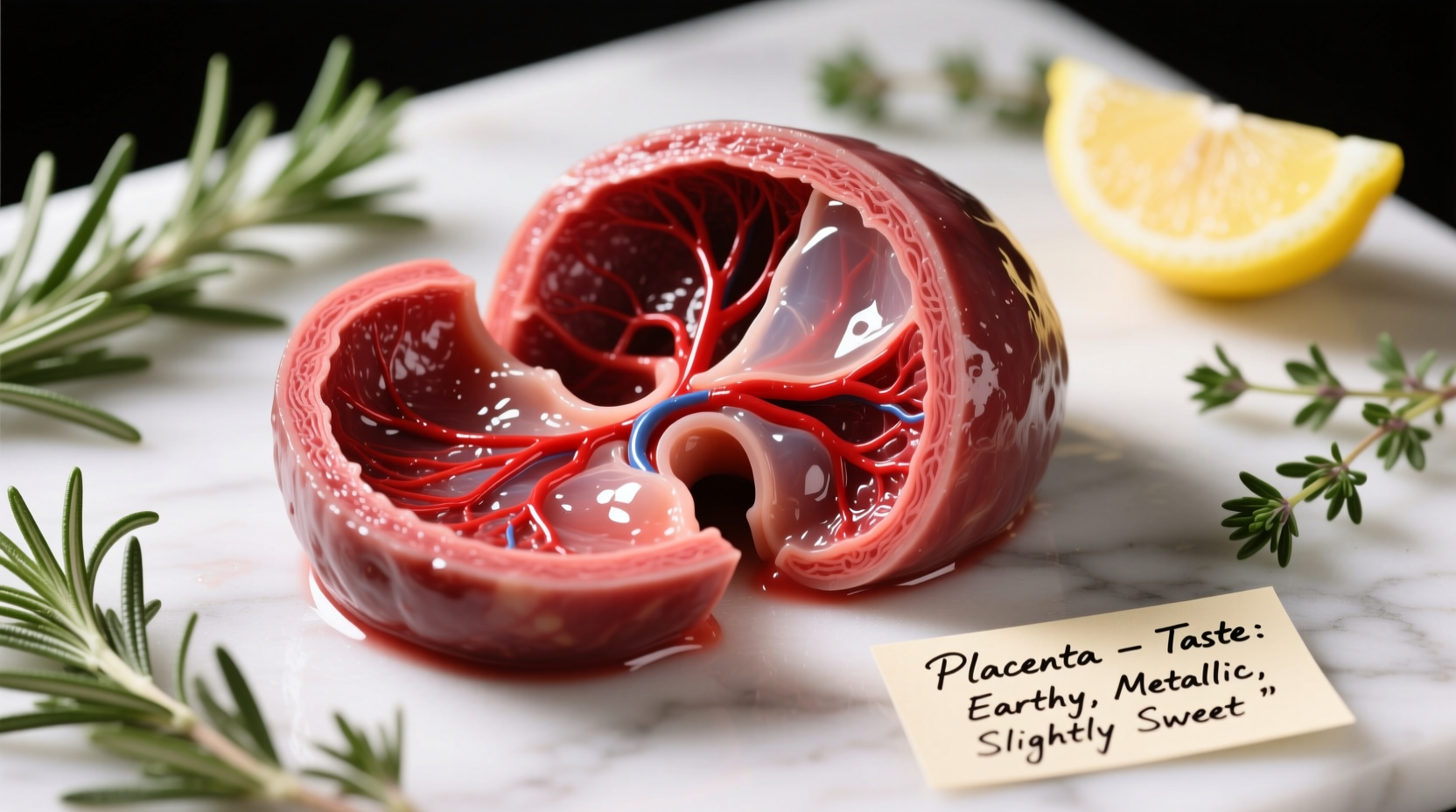Understanding Placenta Composition and Biological Context
The placenta serves as a vital organ during pregnancy, facilitating oxygen and nutrient transfer between mother and fetus. Composed primarily of blood vessels, connective tissue, and amniotic membrane, its biological makeup directly influences potential flavor characteristics. This organ contains high concentrations of iron and protein, which contribute to the metallic, meat-like taste descriptions reported by those who have consumed it.
Medical researchers at National Institutes of Health note that the placenta functions as both respiratory and digestive system for the developing fetus, accumulating various hormones and nutrients throughout pregnancy. This complex biochemical composition creates a unique flavor profile distinct from conventional meats.
Cultural Practices and Historical Context of Placentophagy
While placenta consumption remains uncommon in most Western cultures, various traditional practices exist globally. The timeline below illustrates how different societies have approached placenta disposal and consumption throughout history:
| Time Period | Cultural Practice | Geographic Region |
|---|---|---|
| Ancient Times | Ritual burial or burning | Global (China, Egypt, Native American tribes) |
| 1970s | Emergence of modern placentophagy movement | United States |
| 2000s | Increased interest in placenta encapsulation | Western countries |
| Present Day | Mixed medical perspectives on safety and benefits | Global discussion |
Anthropological research published in Current Anthropology documents that traditional Chinese medicine has incorporated placenta (known as zi he che) for centuries, typically dried and processed rather than consumed fresh. This historical context helps explain why some modern practitioners advocate for placenta encapsulation.
Analyzing Placenta Flavor Characteristics
Based on limited anecdotal reports from individuals who have consumed raw or cooked placenta, several consistent flavor descriptors emerge:
- Iron-rich metallic notes - Due to high blood content
- Mild liver-like flavor - Similar to organ meats but less intense
- Slightly sweet undertones - Reported in some preparation methods
- Texture variations - Described as tender when cooked properly
A 2015 survey published in Birth Journal documented that women who consumed their placenta most commonly compared its taste to liver or rare steak. The study noted significant variation based on preparation method, with steamed and dehydrated placenta having milder flavors than raw consumption.

Safety Considerations and Medical Perspectives
Before considering any aspect of placenta taste, understanding safety implications is crucial. The Centers for Disease Control and Prevention (CDC) has issued warnings about potential health risks associated with placenta consumption, particularly when not processed under sterile conditions.
| Preparation Method | Reported Flavor Profile | Medical Safety Assessment |
|---|---|---|
| Raw consumption | Strong metallic, bloody taste | High risk of bacterial contamination |
| Lightly cooked | Milder metallic notes, tender texture | Moderate risk depending on cooking temperature |
| Encapsulation (dehydrated) | Minimal taste (capsule form) | Lower risk but not fully sterilized |
| Traditional Chinese preparation | Bitter, medicinal taste | Generally safe when properly processed |
The American College of Obstetricians and Gynecologists (ACOG) states there is no scientific evidence supporting health benefits of placenta consumption, while acknowledging potential risks including infection transmission. Their position emphasizes that flavor considerations should never override medical safety concerns.
Contextual Boundaries for Placenta Consumption
Understanding where and when placenta consumption occurs provides important context for taste discussions. Current practices fall within specific boundaries:
- Geographic limitations - Most common in certain Western alternative health communities and specific Asian traditional medicine practices
- Cultural acceptance - Generally not accepted in mainstream medical communities worldwide
- Legal status - Varies by jurisdiction, with some hospitals having specific policies about placenta release
- Medical contraindications - Strongly discouraged for mothers with certain infections or pregnancy complications
Research from the Journal of Obstetrics and Gynaecology Canada indicates that approximately 3-4% of birthing individuals in North America have considered placenta encapsulation, though actual consumption rates are significantly lower. This limited adoption reflects both cultural unfamiliarity and medical community reservations.
Practical Considerations for Those Researching Placenta Taste
If you're exploring this topic for personal decision-making, consider these practical steps:
- Consult with your healthcare provider before making any decisions about placenta handling
- Understand hospital policies regarding placenta release in your area
- Research certified placenta encapsulation specialists if pursuing this route
- Consider cultural alternatives to consumption, such as ceremonial burial
- Evaluate iron supplementation as a safer alternative to address postpartum needs
Remember that personal accounts of placenta taste represent individual experiences that may not reflect universal characteristics. The biological variability between placentas, preparation methods, and individual taste perception creates significant variation in reported flavor profiles.











 浙公网安备
33010002000092号
浙公网安备
33010002000092号 浙B2-20120091-4
浙B2-20120091-4